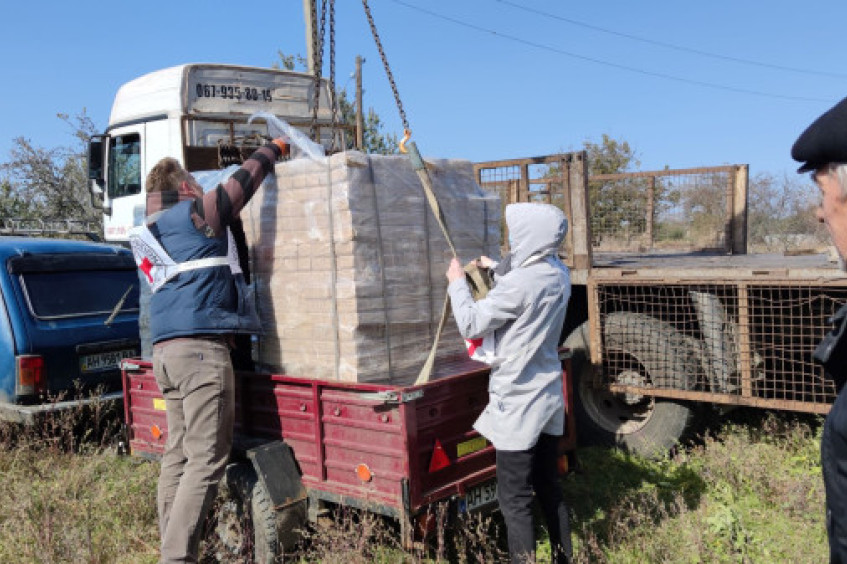23/12/2021 Ucraina (Україна), Oblast’ di Donec’k (Донецька область)
“If you ever come across anything suspicious like this item, please do not pick it up, contact your local law enforcement agency for assistance”
“When the shooting starts, we immediately rush the children indoors. Our little one, who is four, shouts ‘Granny, come here!’. He stands against the wall and makes me stand alongside him, because bullets fly and he is afraid.” Liubov, a grandmother, lives in the town of Mariinka, in eastern Ukraine. She is one of hundreds of thousands of people living close to the line of contact whose lives have been upended by seven years of conflict. While Liubov has got used to the sound of gunfire, her four-year-old grandson shudders every time he hears it. The conflict continues to exact a heavy mental and physical toll on civilians. Ongoing violence and insecurity bring death, injury and separation from loved ones. Damage to water, gas and electricity installations means the most basic of daily tasks are an uphill struggle. Winter stalks a landscape littered with mines and unexploded ordnance. As in previous years, the International Committee of the Red Cross has been supporting people on both sides of the line of contact, helping them to prepare for freezing winter temperatures. This winter, the ICRC has repaired the houses of 1,500 people, while more than 2,500 people have received financial aid so that they can ready their homes to keep out the cold. In Donetsk’s Petrivskyi district, in the non-government-controlled area of the Donbas, 80-year-old Valentyna has a new roof over her head. Heavy shelling blew out all her windows and fire destroyed part of her roof, leaving her exposed to the elements. “Everything was broken and there were draughts all over the place,” she says. “I would heat up bottles of water and put them all around me to keep me warm.” Valentyna can now keep the cold at bay after an ICRC team reroofed her home and installed new windows and a new front door. As winter approached, the ICRC also provided fuel or financial aid to buy firewood to around 10,000 families living on either side of the line of contact. Households received four tonnes of briquettes each for heating their homes. Among them is Svitlana, who lives in Triokhizbenka village, Luhansk region, in eastern Ukraine: “Our house was heavily damaged by shelling, but this year the ICRC replaced the old windows with new metal and plastic ones. We were also granted a thermal insulation kit for our house and UAH 8,000 to buy firewood. Thanks to all that, the house will retain heat better, we will spend less money on heating and maybe even put aside some money to make repairs next year.” The ICRC has also carried out repairs and replaced windows at 11 medical centres and 13 schools on both sides of the line of contact. All this work is part of ongoing efforts to support people as they seek to rebuild their lives and cope with the conflict. In addition to homes, schools and hospitals, the ICRC helps to repair damaged water facilities and other vital infrastructure. We also support livelihood programmes and work to improve conditions in places of detention. We work with the families of missing people, support mental health and access to education programmes, and carry out mine risk awareness activities. We have progressively stepped up our operations in Ukraine since 2014.
Photo: icrc.org
Небрежное обращение с оружием и взрывными устройствами, которые находятся в незаконном обороте, продолжает ежедневно уносить жизни наших граждан», – тогда написал в Facebook замглавы Национальной полиции Украины Вячеслав Аброськин
Dear editors, Biography of a bomb is aimed at highlighting the danger caused by unexploded bombs. Moreover, the most important aspect is that we work completely non profit, raising awerness about this topic is what drives us. We apologize if we make use of pictures in yours articles, but we need them to put a context in how findings are done. We will (and we always do) cite source and author of the picture. We thank you for your comprehension.





